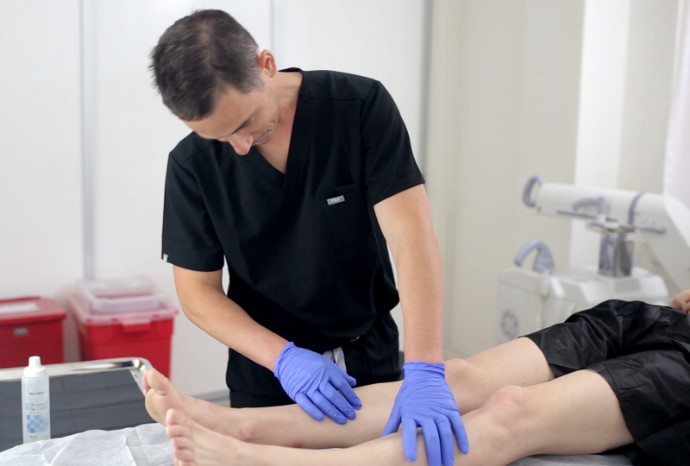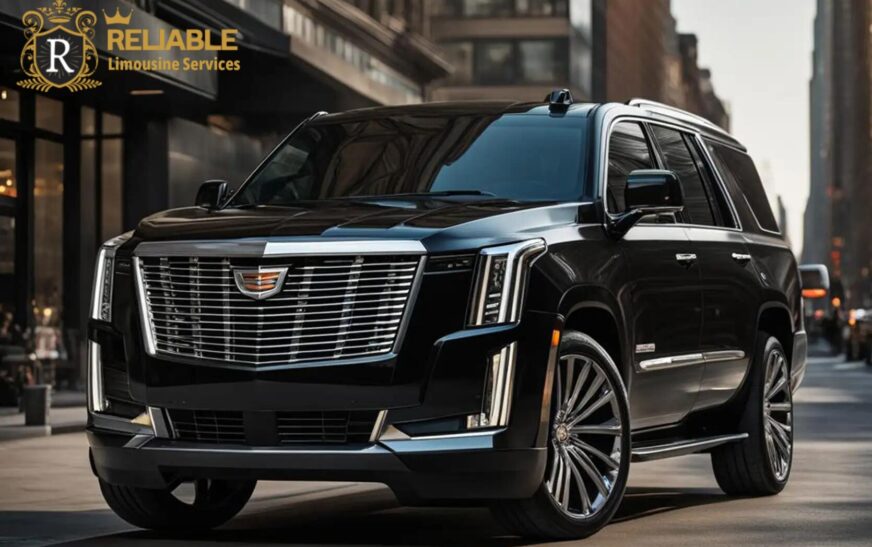Varicose veins are a common medical condition that affects millions of people worldwide. These enlarged, twisted veins usually appear on the legs and can cause discomfort, swelling, and cosmetic concerns. Surgery has been the traditional treatment for varicose veins, but many people now prefer non-surgical options due to their lower risks, shorter recovery times, and minimal discomfort. This article will explore the advantages of non-surgical treatments for varicose veins and answer the question, “How can I get rid of varicose veins without surgery?”
What Are Varicose Veins?
Varicose veins occur when the valves inside the veins that keep blood flowing in one direction become weakened or damaged. This causes blood to pool, leading to the bulging and twisting of the veins. Varicose veins often appear dark blue or purple and are visible just beneath the surface of the skin. In addition to being unsightly, they can cause symptoms such as pain, heaviness, and swelling in the legs.
Why Choose Non-Surgical Treatments?
The non-surgical treatments for varicose veins have gained popularity in recent years for several reasons. These treatments offer significant benefits compared to surgery, including:
- Less Pain and Discomfort: Non-surgical procedures are typically less painful than surgery. Most methods are minimally invasive, meaning that the patient experiences minimal discomfort during and after treatment.
- Shorter Recovery Times: Surgical treatments often require weeks of recovery time, during which the patient may need to limit their activities. Non-surgical treatments usually involve shorter recovery periods, allowing patients to return to their normal routines quickly.
- Lower Risk of Complications: Surgery carries a higher risk of complications such as infections, blood clots, and anesthesia-related issues. Non-surgical options minimize these risks, making them a safer choice for many patients.
- No Scarring: Surgical procedures often leave scars, which may be a concern for those who are looking to improve the cosmetic appearance of their legs. Non-surgical treatments typically do not leave noticeable scars.
Now, let’s delve into the most popular non-surgical treatments for varicose veins.
What Are the Non-Surgical Treatments for Varicose Veins?
Several non-surgical treatments are available to help patients get rid of varicose veins. Each method has its unique advantages and is suitable for different patients depending on the severity of their condition and their overall health. Here are some of the most commonly used non-surgical treatments:
1. Sclerotherapy
Advantage of Sclerotherapy: Sclerotherapy is one of the oldest and most effective non-surgical treatments for varicose veins. It involves injecting a solution directly into the affected veins, causing them to collapse and eventually fade away. This treatment is particularly useful for small to medium-sized varicose veins.
- Procedure: A fine needle is used to inject the sclerosing agent into the veins. This solution irritates the vein walls, leading them to stick together and close off. Over time, the body absorbs the closed vein, and blood is redirected to healthier veins.
- Recovery: Sclerotherapy is a quick outpatient procedure that requires no anesthesia. Most patients can resume normal activities immediately after the treatment. However, compression stockings may be recommended to aid in healing and improve circulation.
- Effectiveness: Sclerotherapy has a high success rate, especially for smaller varicose veins and spider veins. It often takes multiple sessions to achieve optimal results, but the improvements are long-lasting.
2. Endovenous Laser Therapy (EVLT)
Advantage of EVLT: Endovenous Laser Therapy (EVLT) is a popular option for treating larger varicose veins. This minimally invasive treatment uses laser energy to heat and seal off the affected veins from the inside.
- Procedure: EVLT involves the insertion of a thin laser fiber into the varicose vein through a small incision. The laser emits energy that heats the vein, causing it to collapse and be absorbed by the body over time.
- Recovery: The procedure is performed under local anesthesia and takes about an hour. Patients can typically walk out of the clinic and resume normal activities within a day or two.
- Effectiveness: EVLT is highly effective in treating large varicose veins and has a low recurrence rate. It is also a preferred choice for patients looking for a minimally invasive option with excellent cosmetic outcomes.
3. Radiofrequency Ablation (RFA)
Advantage of RFA: Radiofrequency Ablation (RFA) is another minimally invasive treatment for varicose veins. It uses radiofrequency energy to heat and close off the problematic veins.
- Procedure: Similar to EVLT, RFA involves inserting a catheter into the affected vein. The catheter delivers radiofrequency energy, which heats the vein and causes it to collapse. The body naturally absorbs the treated vein over time.
- Recovery: RFA is performed under local anesthesia and takes about an hour to complete. Most patients experience minimal discomfort and can return to their daily activities within a day or two.
- Effectiveness: RFA is highly effective for treating larger varicose veins and offers excellent cosmetic results. It is a great option for patients who prefer a non-surgical alternative to vein stripping.
4. VenaSeal™
Advantage of VenaSeal™: VenaSeal™ is a cutting-edge treatment that uses medical adhesive to close off varicose veins. This innovative technique offers a highly effective and convenient solution without the need for heat or anesthesia.
- Procedure: During the VenaSeal™ procedure, a small amount of medical adhesive is delivered into the varicose vein via a catheter. The adhesive seals the vein shut, redirecting blood flow to healthier veins.
- Recovery: One of the major advantages of VenaSeal™ is that patients do not need to wear compression stockings after the procedure. There is minimal discomfort, and most people can resume normal activities immediately.
- Effectiveness: VenaSeal™ has shown excellent long-term results for treating varicose veins. Its minimally invasive nature makes it a popular choice for those seeking a quick and effective solution.
5. Varithena® Foam Therapy
Advantage of Varithena®: Varithena® is a specialized foam treatment for varicose veins that is injected directly into the affected veins. It is an effective option for both large and small varicose veins.
- Procedure: A foam sclerosant is injected into the varicose vein, causing it to close and eventually be absorbed by the body. The foam spreads evenly throughout the vein, making it a highly effective treatment for veins of varying sizes.
- Recovery: Varithena® is an outpatient procedure that requires no anesthesia. Patients can resume normal activities on the same day, although wearing compression stockings may be recommended for a short period.
- Effectiveness: Varithena® foam therapy offers long-lasting results and is suitable for patients with a wide range of varicose vein issues. It is an excellent choice for those looking for a non-surgical solution.
How to Choose the Right Treatment?
Choosing the right non-surgical treatment for varicose veins depends on several factors, including the size and location of the veins, the patient’s medical history, and personal preferences. Here are a few considerations to keep in mind when selecting a treatment:
- Consult a Specialist: A vein specialist or vascular surgeon can assess your condition and recommend the most suitable treatment based on the severity of your varicose veins.
- Consider Your Symptoms: If you experience significant pain, swelling, or discomfort, treatments like EVLT or RFA may be more appropriate for providing relief.
- Cosmetic Concerns: For patients primarily concerned with the appearance of their veins, treatments like sclerotherapy or VenaSeal™ may offer the best cosmetic results.
- Recovery Time: If you prefer a quick recovery with minimal downtime, non-surgical treatments are an excellent choice. Procedures like Varithena® and VenaSeal™ allow you to return to your normal activities almost immediately.
What Can You Do to Prevent Varicose Veins?
While non-surgical treatments can effectively eliminate existing varicose veins, there are steps you can take to prevent new veins from forming. Here are some tips for keeping your veins healthy:
- Exercise Regularly: Physical activity, especially activities like walking, swimming, and cycling, helps improve circulation and prevent blood from pooling in the veins.
- Maintain a Healthy Weight: Excess weight puts additional pressure on your veins, so maintaining a healthy weight can reduce the risk of developing varicose veins.
- Avoid Prolonged Sitting or Standing: If your job requires you to sit or stand for long periods, try to take breaks to move around and stretch your legs.
- Elevate Your Legs: When resting, try to elevate your legs above the level of your heart to improve circulation and reduce swelling.
- Wear Compression Stockings: Compression stockings can help improve circulation and prevent the formation of varicose veins, especially for individuals at higher risk.
Conclusion
The advantage of non-surgical treatments for varicose veins lies in their ability to provide effective results with minimal discomfort, shorter recovery times, and lower risks compared to surgery. Whether you choose sclerotherapy, EVLT, RFA, VenaSeal™, or Varithena® foam therapy, these treatments offer viable options for getting rid of varicose veins without surgery. By consulting with a vein specialist and considering your specific needs, you can find the right solution to improve both your health and the appearance of your legs.
Feel free to submit more guest posts through Links Building Servcies - Best Prices. Buy Author Account / 1$ Guest Post Here
























